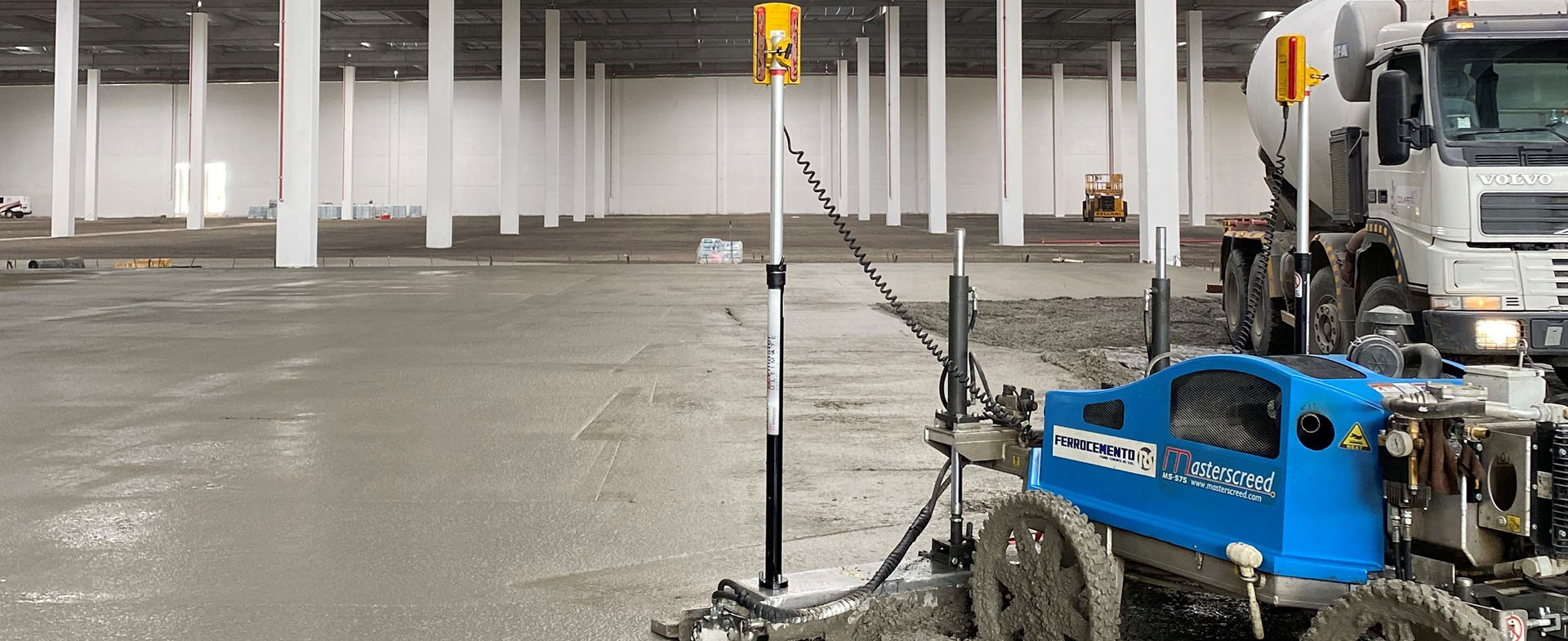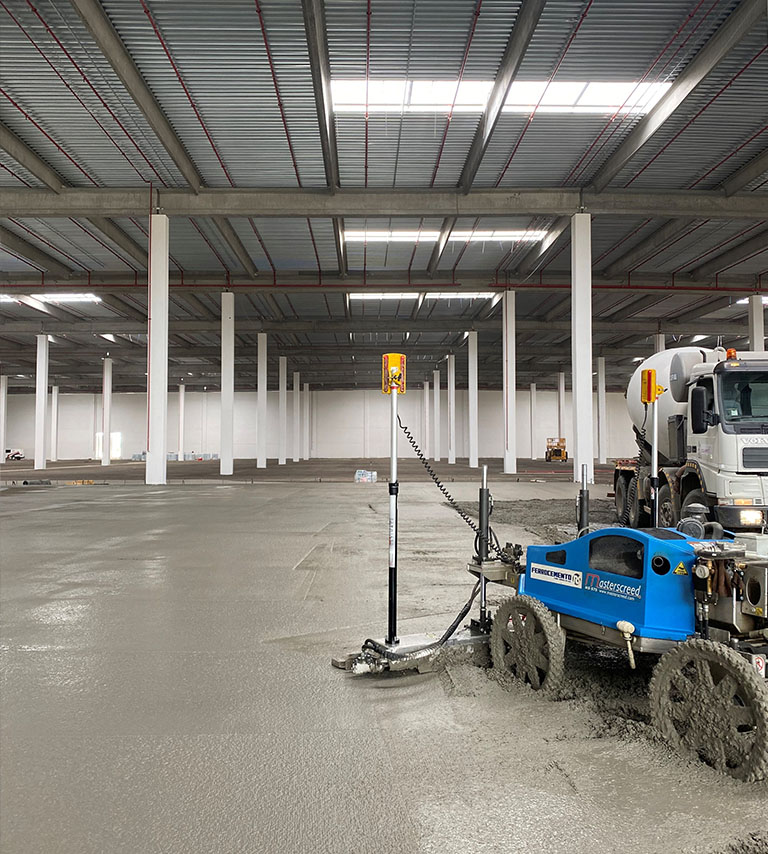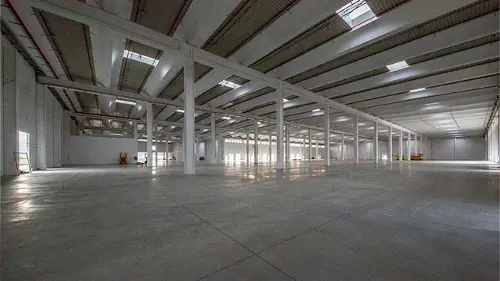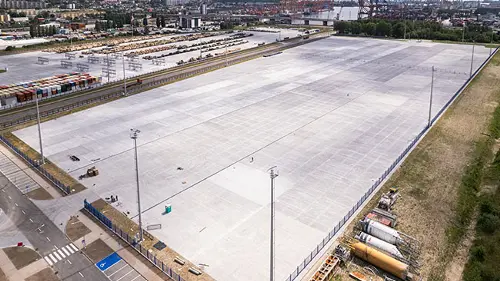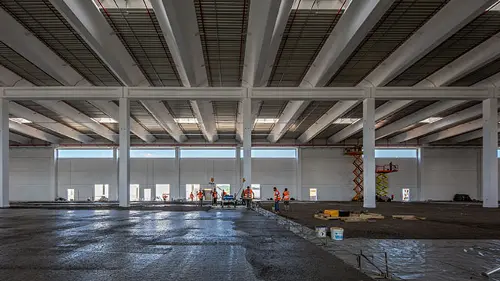Matteo Draconte
Corporate Product Line Specialist, Fibers, Mapei Group
Practicality, lower costs and less impact on the environment by using synthetic macro fibers.
The advantages of the synthetic macro fibers in concrete
Fiber-reinforced concrete has become one of the most widely used materials to make industrial floors and numerous standards and guidelines around the world acknowledge its function for structural purposes.
Designers, therefore, play a fundamental role; they need to define the characteristics of the materials to be used and perform structural calculations, where required. Once designed, the floor must then undergo the prescribed checks, both during installation and again on the final, completed floor.
The mix design of the concrete employed has a decisive role in creating a high-quality industrial floor.
With the introduction of synthetic macro fibers in concrete, traditional steel reinforcement can be either reduced or completely replaced in industrial floors, bringing benefits such as lower costs and more practical installation, as well as a considerable reduction in CO2 emissions. What is more, the use of fibers also makes concrete, which is essentially a brittle material, significantly more ductile and tougher.
What makes synthetic fibres sustainable technology may be easily identified during both the manufacturing phase and the application phase of the product itself
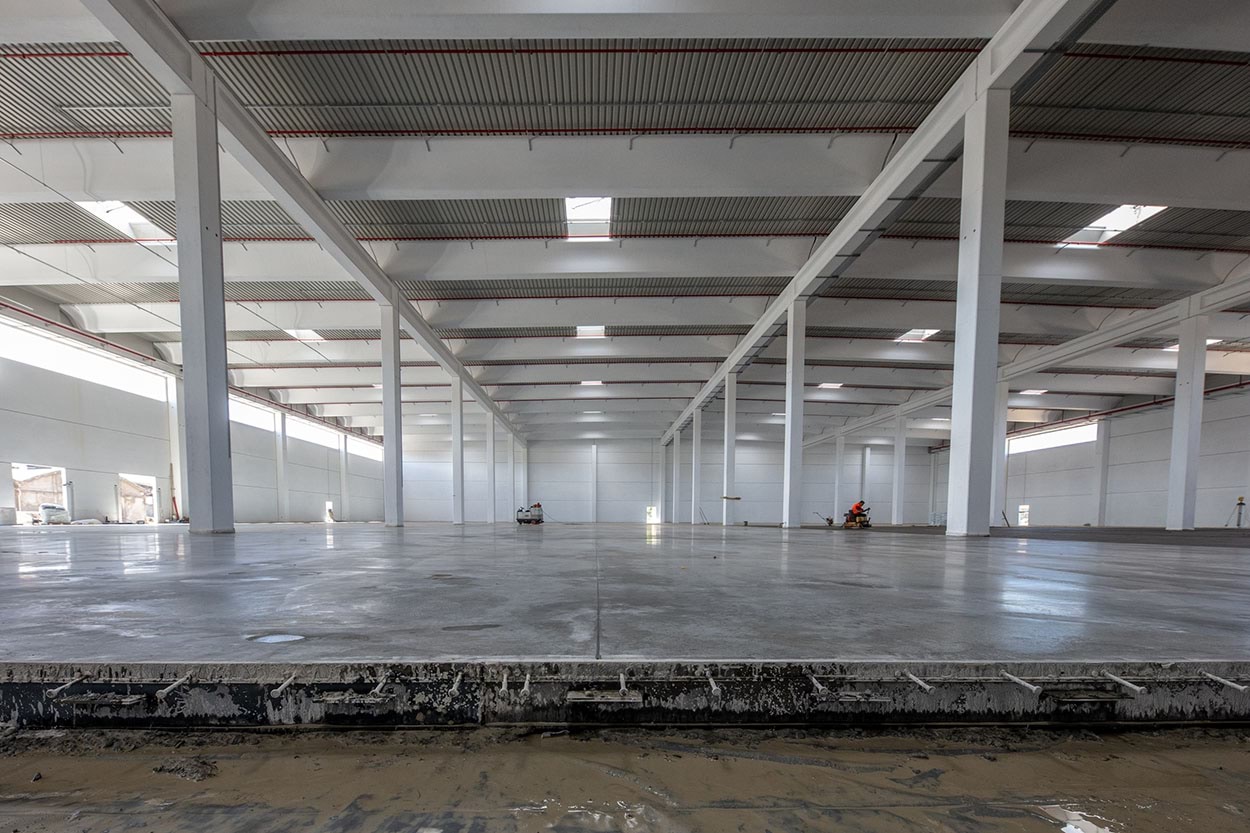
A concrete floor, created using fibers, upon completion of work.
The use of macro fibers in industrial floors is rapidly increasing all around the world, thanks to the growing number of designers and construction companies that acknowledge their capacity to meet design requirements.
Macro fibers provide three-dimensional reinforcement within the matrix and a structural contribution to the concrete, in compliance with European standard EN 14889-2:2006, “Fibers for concrete. Polymer fibers. Definitions, specifications and conformity”, which defines them as “for structural use”.
When they are used to improve the load-bearing properties of concrete, synthetic macro fibers undergo testing according to European standard EN 14651 which contains the test method for measuring the toughness class of fiber-reinforced concrete and, therefore, the residual performance properties of concrete after cracking.
As mentioned previously, not only does the use of fiber-reinforced concrete enable traditional steel reinforcement to be reduced to a minimum or replaced completely, it also speeds up construction times on site, improves the level of safety in the workplace and minimises the impact of transporting materials.
There are currently two associations, MSFA (Macro Synthetic Fibres Association) in Europe and FRCA (Fiber Reinforced Concrete Association) in the USA, through which Mapei and other leading companies from the construction materials sector work with designers and the most prestigious universities to promote this innovative technology and its numerous advantages on the market.
Fibers also enable concrete to become significantly more ductile and tougher
Reducing environmental impact
What makes synthetic fibers sustainable technology may be easily identified during both the manufacturing phase and the application phase of the product itself.
Synthetic fibers are manufactured by melting granules of different types of polymers together and then extruding filaments in differing forms and with different mechanical characteristics.
All waste material from the manufacturing process is constantly collected and recycled, classifying the production of synthetic fibers as a “zero-waste” process according to Circular Economy principles.
Another aspect that makes synthetic fibers a sustainable technology regards their application, which is far more cost-effective if compared with traditional steel reinforcement.
Eliminating the transport and application/positioning of steel mesh also leads to a significant reduction in the amount of construction materials consumed and, as a result, a reduction in equivalent CO2 emissions.
With such a modern and increasingly sustainable approach, designers play a key role in choosing to opt for materials with low impact on the environment.
This means they have to calculate the analysis of a building’s life cycle and identify construction techniques and processes that would reduce the time required for their construction.
In line with this approach, the Concrete Flooring Solutions line by Mapei provides support for floor designers, proposing sustainable and innovative solutions, through the use of fiber reinforced concrete containing Mapei macro fibers for structural use.
